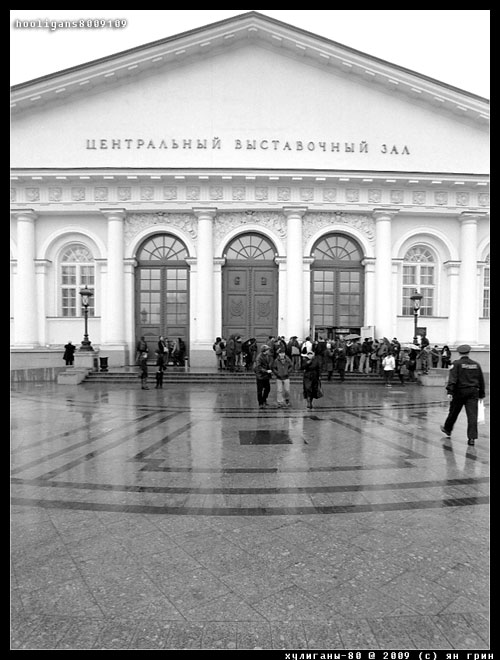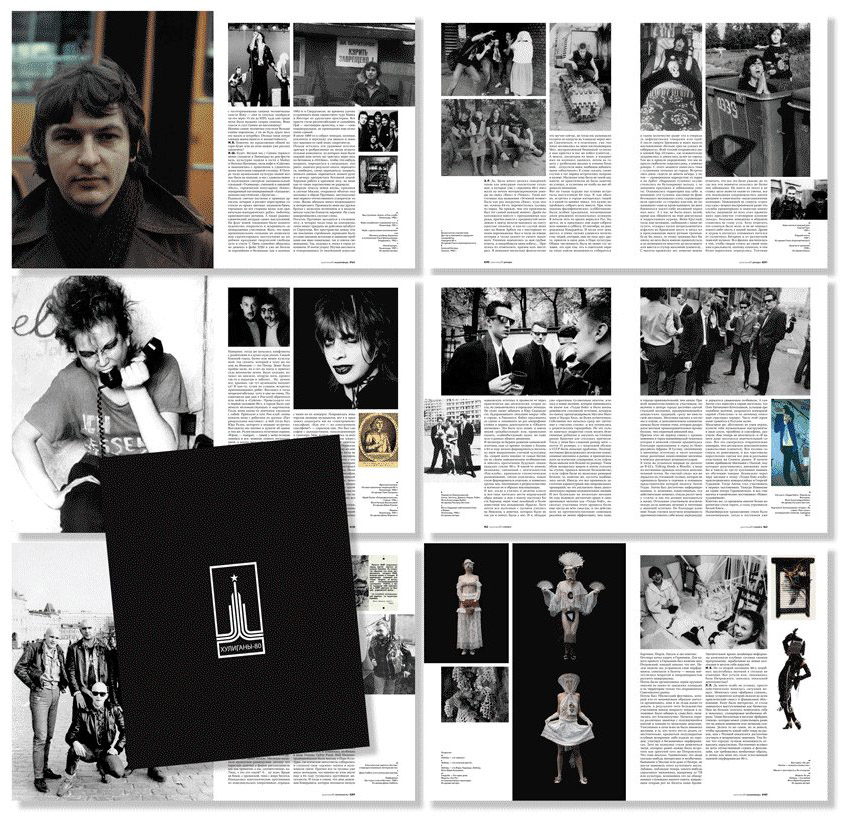|
Ñ 27 ìàðòà ïî 20 àïðåëÿ 2009 ãîäà.
“Hooligans
of the 80s”
1980s fashion: subculture style
The 1980s brought fashionable perestroikas and a perestroika
of fashion. A period that saw the emergence of new styles and
new creative spaces. Charged by the energy of anticipated change,
Soviet youth created new musical styles, street fashion, communal squats…
This project by Misha Baster and Irina Meglinskaya
is a photographic history of the Soviet artistic underground,
an attempt to present anew and reconstruct something that many people
experienced and then forgot. Bikers, breakdancers, Teddy boys, New Wavers,
punks, metalheads, rockers, rockabillies. Zhanna Aguzarova, Garik Assa,
Alexander Petlyura, Andrey Bartenev, Viktor Tsoi, Sergey Kuryokhin, Timur
Novikov, Malchishnik and Dolphin… More than three hundred amateur
or professional, black-and-white or colour photographs from the
private archives of those who took part in 1980s street movements, taken
on squares, bridges, streets, concerts, kitchens, beaches, motorcycles,
escalators, railway tracks, balconies, benches, bus stops, stages and stadiums.
This alternative to the Soviet regime originated from subcultures formed in the
early 1980s. Their participants and heroes occupied squats and street stages, enticing
ordinary passers-by to join them in a celebration of civil
disobedience. The exaggerated dress code, hairstyles, tattoos and make-up were
intended to shock, it was a demonstration of freedom and
independence pushed to the limit, challenging 'normal', conventional
Soviet imagery.
The photo-premiere of the “Hooligans of the 80s” is part of the
eponymous project to be continued in Misha Buster's book.
In a series of interviews those involved in these
provocative street protests give the author and co-participant their own view
of the turbulent eighties, when they used their perception
of trendsetting foreign ideas and experimental music to create
a unique world with its own fashion, music, language and marketplace. The
book consists of more than twenty interviews with outstanding
representatives of unofficial culture, and over eight hundred photographs
from their personal archives. “In the Perestroika period many adolescents took
up brutal non-Soviet concepts marked by anti-heroism, bravado and the
originality of the hooligan. All this happened as part of the
clash between the “normal” and “abnormal”, and these style images,
in turn, protected our own teenager idealism and became key criteria
in the search for others like ourselves on the streets of many
Soviet cities”. (M. Buster).
The 1980s marked a turning point in the stylistics of the
country as a whole. The Iron Curtain was lifted up so that new
rhythms, new goods and fabrics filtered through proved problematic for
adolescent identity, but nonetheless introduced the possibility for
experimentation in human relations, in self-expression and lifestyle.
These aesthetics were projected into contemporary society to the acoustic
accompaniment of musicians who would become part of the project,
a soundtrack to the history of hooligans of the eighties.

Photo from expo

Photo Album
Ïðåññà î ïðîåêòå
L'Expresse
Born in USSR
La Biennale de Moscou présente 60 expositions de photographes :
Erwin Olaf, Guy Bourdin... Et une rétrospective exceptionnelle sur la
contre-culture des années 1980.
En Mode Fashion
Io Donna. NOI, perestrojka BOYS.
Nel 1989 Gorbaciov sgretolò il Muro. Ma furono loro a sovvertire il
costume sovietico. A suon di chitarre elettriche, creste punk
e bikers sulla Piazza Rossa. «Fu il più grande festival della
disobbedienza giovanile» ricordano. Al vecchio mondo si sostituì quello
nuovo,
basato sul denaro. «Ma non era quello che sognavamo»
di Lucia Sgueglia
LE MONDE
URSS, QUEI RAGAZZI DELL
Uscito su Io Donna, settimanale del Corriere della Sera
|






